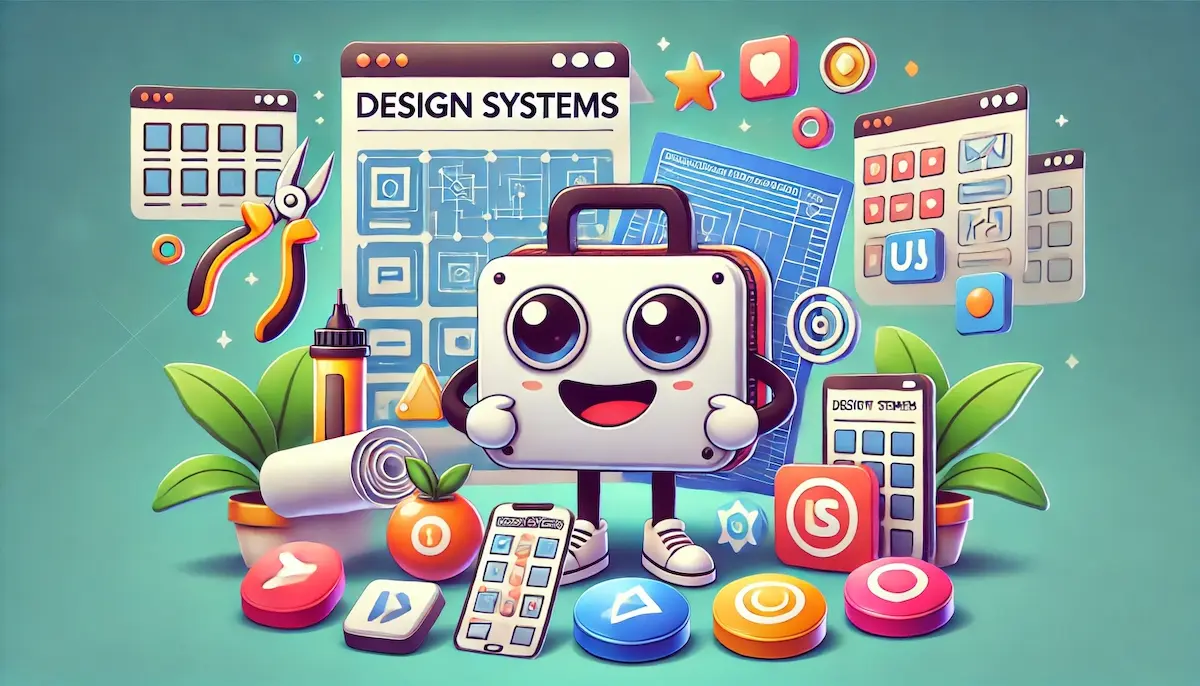A design system is a collection of reusable components, guided by clear standards, that can be assembled together to build any number of applications. It serves as a single source of truth for design, development, and branding, ensuring consistency and efficiency across a company’s digital products.
What is a Design System?
A design system encompasses a set of interconnected patterns and shared practices coherently organized to achieve the purpose of digital product design and development. It includes:
- UI Components: Reusable interface elements like buttons, forms, and navigation menus.
- Design Principles: Guidelines and best practices that inform how designs should be created.
- Patterns: Solutions to common design problems.
- Style Guides: Documentation on visual styles such as colors, typography, and spacing.
- Brand Guidelines: Rules on how the brand should be represented visually and verbally.
- Code Libraries: Reusable code snippets and libraries for developers.
The Importance of Design Systems
Design systems offer several key benefits:
- Consistency: Ensures a unified look and feel across all products, reinforcing brand identity.
- Efficiency: Speeds up the design and development process by providing ready-made components and guidelines.
- Scalability: Makes it easier to scale design across multiple products and teams, maintaining a coherent user experience.
- Collaboration: Enhances collaboration between designers, developers, and other stakeholders by providing a shared language and toolkit.
- Quality: Improves the overall quality of digital products by standardizing best practices and reducing the likelihood of errors.
Key Components of a Design System
A comprehensive design system typically includes the following components:
- UI Components: Reusable building blocks for user interfaces, such as buttons, cards, modals, and tooltips.
- Design Tokens: Variables that store design decisions like colors, fonts, spacing, and animation values, ensuring consistency across all platforms.
- Style Guides: Documentation on visual styles, including color palettes, typography, iconography, and spacing.
- Patterns: Reusable solutions for common design challenges, such as forms, navigation, and error handling.
- Principles and Guidelines: High-level design principles and detailed guidelines that inform design decisions and ensure consistency.
- Accessibility Standards: Guidelines and best practices to ensure that the design system supports accessible and inclusive design.
- Code Libraries: Reusable code components and libraries for developers, often available in multiple frameworks (e.g., React, Angular, Vue).
Creating a Design System
Creating a design system involves several key steps:
- Research and Audit: Conduct a thorough audit of existing design assets and identify inconsistencies. Research the needs of different teams and stakeholders.
- Define Principles and Goals: Establish clear design principles and goals that will guide the development of the design system.
- Design Components and Patterns: Create reusable UI components and patterns, ensuring they adhere to the defined principles and goals.
- Develop Documentation: Create comprehensive documentation for all components, patterns, and guidelines. This should be easily accessible to all team members.
- Build and Test: Develop the code libraries for the design system and rigorously test them to ensure they are robust and accessible.
- Implement and Iterate: Roll out the design system across the organization and gather feedback. Continuously iterate and improve the system based on user feedback and evolving needs.
Examples of Popular Design Systems
Several well-known companies have developed comprehensive design systems that serve as excellent references:
- Google Material Design: A design system that provides guidelines and components for creating visually consistent and functional user interfaces across different platforms.
- Atlassian Design System: Atlassian’s design system includes UI components, patterns, and guidelines to help teams build cohesive and accessible products.
- IBM Carbon Design System: A system that provides a set of guidelines, components, and patterns for creating consistent and accessible user experiences.
- Salesforce Lightning Design System: A collection of design patterns and components that help create applications with a consistent look and feel.
Conclusion
Design systems are essential for creating consistent, efficient, and scalable digital products. By providing a unified set of components, guidelines, and best practices, design systems help teams collaborate more effectively and deliver higher-quality user experiences.
Blockfine thanks you for reading and hopes you found this article helpful.
